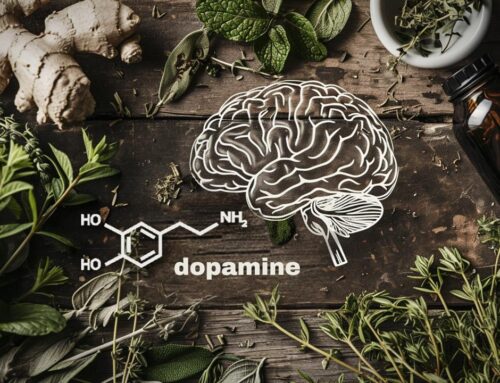Boswellia Herbal Pain Relief
Boswellia, often recognized as Indian Frankincense, stands as a time-honored natural remedy. Its roots trace back to ancient Ayurveda, where it was revered for its impressive healing properties. In our modern age, Boswellia continues to gain acclaim, especially for its effectiveness in pain relief and inflammation reduction.
Key Takeaways
- Boswellia offers significant relief in conditions like arthritis and joint pain.
- Known for its strong anti-inflammatory properties.
- Safe and natural alternative to conventional pain medication.
Table of Contents
- What is Boswellia?
- Historical and Traditional Use of Boswellia in Medicine
- Boswellia vs. Modern Pain Relief Methods
- The Science Behind Boswellia’s Pain Relief Properties
- Boswellia in the Treatment of Arthritis and Joint Pain
- Boswellia’s Role in Combating Inflammatory Bowel Disease
- Utilizing Boswellia for Respiratory Conditions and Asthma
- Exploring Boswellia’s Potential in Cancer Treatment
- Boswellia Extracts: Forms, Dosage, and Administration
- Side Effects and Safety Considerations
- Frequently Asked Questions
- Conclusion
- Additional Resources
What is Boswellia?
Boswellia, also known as Indian Frankincense, is more than just a plant; it’s a cornerstone of herbal medicine with a rich history. This section delves into what Boswellia is, covering its botanical background, key characteristics, and the unique components that make it an important medicinal herb.
Botanical Background
- Species and Habitat: Boswellia is a genus of trees known for their fragrant resin. The most well-known species, Boswellia serrata, thrives in the dry, mountainous regions of India. Other species, like Boswellia sacra and Boswellia carteri, are native to the Arabian Peninsula and parts of Africa.
- Tree Characteristics: These trees have a distinctive appearance, with papery bark and clustered leaves. They can reach up to 25 feet in height. The valuable resin is harvested from the bark through a process called tapping, similar to how maple syrup is collected.
Resin and Its Uses
- Harvesting Resin: The resin, which is the source of Frankincense, is extracted by making incisions in the tree’s bark. The sap that oozes out hardens into resinous chunks, which are collected for various uses.
- Historical and Cultural Significance: Frankincense has been used for thousands of years, not just in traditional medicine but also in religious ceremonies and as a fragrance. Its use dates back to ancient civilizations, including the Egyptians and the Romans.
Medicinal Properties
- Active Compounds: Boswellia resin contains several key bioactive compounds, primarily boswellic acids. These acids are the main source of its anti-inflammatory properties.
- Therapeutic Uses: Traditionally, Boswellia has been used to treat a variety of ailments, from inflammation and pain to digestive issues. Modern research is exploring its potential in treating chronic inflammatory conditions like arthritis, asthma, and inflammatory bowel disease.
Modern Research and Interest
- Clinical Studies: Recent studies have focused on the anti-inflammatory and analgesic properties of Boswellia. These studies aim to understand how Boswellia can be integrated into modern medical practices.
- Growing Popularity: With an increasing interest in natural and alternative therapies, Boswellia is gaining popularity in the Western world. It is now commonly found in health food stores and pharmacies, usually in the form of supplements.
Historical and Traditional Use of Boswellia in Medicine
Boswellia has a storied past, deeply rooted in various traditional medicine systems across the world. This section expands on the historical and traditional uses of Boswellia, exploring its significance across different cultures and its evolution into a recognized herbal remedy.
Ancient Medicine and Cultural Practices
- Ayurveda: In ancient India, Boswellia was a revered herb in Ayurvedic medicine. Known as ‘Shallaki’ in Sanskrit, it was used for treating arthritis, healing wounds, and improving digestive health.
- Middle Eastern and African Traditions: In the Middle East and Africa, Boswellia resin (Frankincense) was valued not just for its aromatic qualities but also for its medicinal properties. It was used in traditional remedies for its anti-inflammatory and analgesic effects.
- Religious and Cultural Significance: Frankincense, derived from Boswellia, has been mentioned in various religious texts, including the Bible. It was one of the gifts offered to Jesus by the Wise Men, highlighting its value in ancient times.
Evolution in Medical Practices
- Transition to Modern Herbal Medicine: Over centuries, the use of Boswellia has evolved from traditional practices to become a part of modern herbal medicine. Its therapeutic properties have been increasingly validated by scientific research.
- Incorporation into Contemporary Therapies: Today, Boswellia is integrated into various holistic healing practices, including naturopathy and integrative medicine, especially for treating inflammatory conditions.
Range of Traditional Uses
- Treatment of Inflammatory Disorders: Traditionally, Boswellia was used to treat various forms of inflammation, from joint pain and arthritis to inflammatory bowel diseases.
- Respiratory Ailments: Its use in treating respiratory conditions such as asthma and bronchitis has a long history, owing to its anti-inflammatory properties.
- Skin and Cosmetic Uses: Boswellia resin was also applied in traditional skincare, used in ointments for soothing skin irritations and enhancing skin health.
The Therapeutic Journey
- From Resin to Extract: The journey of Boswellia from raw resin to refined extracts has marked its transition into a scientifically recognized herbal remedy.
- Preservation of Traditional Knowledge: While modern science explores Boswellia’s potential, there’s a continual effort to preserve the rich traditional knowledge and practices associated with this ancient herb.
Boswellia vs. Modern Pain Relief Methods
Understanding the scientific mechanisms of Boswellia’s pain relief properties is crucial to appreciating its role in modern medicine. This section delves into the biochemistry of Boswellia and how it interacts with the body to provide pain relief and reduce inflammation.
Active Compounds in Boswellia
- Boswellic Acids: The primary active components of Boswellia are boswellic acids, including AKBA (Acetyl-11-keto-β-boswellic acid). These compounds are responsible for most of Boswellia’s anti-inflammatory and pain-relieving effects.
- Terpenes: Boswellia also contains various terpenes, aromatic compounds known for their therapeutic properties, contributing to its overall efficacy in pain relief.
Mechanisms of Action
- Inhibition of Inflammatory Pathways: Boswellic acids inhibit the 5-lipoxygenase (5-LO) enzyme, which plays a key role in the biosynthesis of leukotrienes, pro-inflammatory mediators in the body. This action helps reduce inflammation and associated pain.
- Modulation of Immune Response: Boswellia impacts the immune system by modulating the production of cytokines, substances secreted by immune cells that can cause inflammation.
Comparison with NSAIDs
- Targeting Different Enzymes: While NSAIDs primarily target COX enzymes (cyclooxygenases), leading to the reduction of prostaglandins, Boswellia’s focus on 5-LO offers a different approach, which is beneficial for conditions where leukotrienes play a major role.
- Reduced Gastrointestinal Risk: Unlike NSAIDs, which can cause gastric irritation and other side effects, Boswellia is gentler on the stomach, making it a safer alternative for long-term use.
Clinical Studies and Evidence
- Research on Arthritis and Joint Pain: Numerous clinical trials have shown that Boswellia significantly reduces pain and improves mobility in patients with osteoarthritis and rheumatoid arthritis.
- Studies on Chronic Inflammatory Conditions: Boswellia’s effectiveness in reducing inflammation has been demonstrated in various chronic conditions, including inflammatory bowel diseases and asthma.
Bioavailability and Optimization
- Absorption and Metabolism: Research is ongoing to improve the bioavailability of Boswellic acids, as they are not easily absorbed in the gut. Methods such as combining them with other substances or developing specialized formulations are being explored.
- Standardization of Extracts: The standardization of Boswellia extracts is crucial for consistent therapeutic effects. Ensuring a high percentage of active boswellic acids in supplements is key to their effectiveness.
The Science Behind Boswellia’s Pain Relief Properties
Understanding the scientific mechanisms of Boswellia’s pain relief properties is crucial to appreciating its role in modern medicine. This section delves into the biochemistry of Boswellia and how it interacts with the body to provide pain relief and reduce inflammation.
Active Compounds in Boswellia
- Boswellic Acids: The primary active components of Boswellia are boswellic acids, including AKBA (Acetyl-11-keto-β-boswellic acid). These compounds are responsible for most of Boswellia’s anti-inflammatory and pain-relieving effects.
- Terpenes: Boswellia also contains various terpenes, aromatic compounds known for their therapeutic properties, contributing to its overall efficacy in pain relief.
Mechanisms of Action
- Inhibition of Inflammatory Pathways: Boswellic acids inhibit the 5-lipoxygenase (5-LO) enzyme, which plays a key role in the biosynthesis of leukotrienes, pro-inflammatory mediators in the body. This action helps reduce inflammation and associated pain.
- Modulation of Immune Response: Boswellia impacts the immune system by modulating the production of cytokines, substances secreted by immune cells that can cause inflammation.
Comparison with NSAIDs
- Targeting Different Enzymes: While NSAIDs primarily target COX enzymes (cyclooxygenases), leading to the reduction of prostaglandins, Boswellia’s focus on 5-LO offers a different approach, which is beneficial for conditions where leukotrienes play a major role.
- Reduced Gastrointestinal Risk: Unlike NSAIDs, which can cause gastric irritation and other side effects, Boswellia is gentler on the stomach, making it a safer alternative for long-term use.
Clinical Studies and Evidence
- Research on Arthritis and Joint Pain: Numerous clinical trials have shown that Boswellia significantly reduces pain and improves mobility in patients with osteoarthritis and rheumatoid arthritis.
- Studies on Chronic Inflammatory Conditions: Boswellia’s effectiveness in reducing inflammation has been demonstrated in various chronic conditions, including inflammatory bowel diseases and asthma.
Bioavailability and Optimization
- Absorption and Metabolism: Research is ongoing to improve the bioavailability of Boswellic acids, as they are not easily absorbed in the gut. Methods such as combining them with other substances or developing specialized formulations are being explored.
- Standardization of Extracts: The standardization of Boswellia extracts is crucial for consistent therapeutic effects. Ensuring a high percentage of active boswellic acids in supplements is key to their effectiveness.
Boswellia in the Treatment of Arthritis and Joint Pain
Boswellia has emerged as a significant natural remedy in the treatment of arthritis and joint pain, offering an alternative or complement to conventional treatments. This section provides an in-depth look at how Boswellia is used to manage these conditions, its effectiveness, and the scientific backing for its use.
Efficacy in Arthritis Management
- Osteoarthritis: Boswellia has been found particularly effective in treating osteoarthritis, a common degenerative joint disease. Its anti-inflammatory properties help reduce joint pain and improve mobility.
- Rheumatoid Arthritis: As an autoimmune condition characterized by inflammation, rheumatoid arthritis has also been responsive to Boswellia treatment. The herb helps in reducing inflammation and alleviating pain associated with the condition.
Mechanism of Action in Joint Health
- Inhibiting Inflammation: The boswellic acids in Boswellia specifically target and inhibit the 5-lipoxygenase enzyme, which is a key player in the inflammatory process associated with arthritis.
- Protecting Joint Tissue: Boswellia not only reduces inflammation but also appears to help preserve the cartilage and joint tissue, potentially slowing the progression of arthritis.
Clinical Studies and Results
- Research Findings: Numerous studies have demonstrated Boswellia’s effectiveness in reducing joint pain and swelling. For instance, some studies have shown a significant reduction in knee pain and an improvement in knee flexion in patients with knee osteoarthritis.
- Comparative Studies: Comparisons with NSAIDs have shown that Boswellia can be equally effective in pain relief but with a lower risk of side effects.
Patient Experiences and Quality of Life
- Improvements in Daily Activities: Patients taking Boswellia supplements have reported improved ability to perform daily activities, such as walking and climbing stairs, without the discomfort of joint pain.
- Long-term Benefits: Long-term use of Boswellia has been associated with sustained improvements in joint health and a reduction in the need for conventional pain medications.
Dosage and Administration
- Recommended Dosage: The effective dose of Boswellia for arthritis and joint pain relief usually ranges from 300 to 500 mg of standardized extract, taken two to three times daily.
- Formulations: Boswellia is available in various forms, including capsules, tablets, and topical creams. The choice of formulation depends on individual preferences and specific health needs.
Safety and Tolerability
- Side Effects: Boswellia is generally well-tolerated with few reported side effects, making it a viable option for individuals who cannot tolerate the side effects of traditional arthritis medications.
- Interactions with Other Medications: It is important for patients to consult healthcare providers about using Boswellia, especially if they are on other medications for arthritis or related conditions.
Boswellia’s Role in Combating Inflammatory Bowel Disease
Boswellia has gained attention for its potential role in managing Inflammatory Bowel Disease (IBD), a group of disorders that cause chronic inflammation of the digestive tract. This section explores how Boswellia contributes to the treatment of IBD, including Crohn’s disease and ulcerative colitis, and examines its effectiveness and mode of action.
Understanding Inflammatory Bowel Disease
- Nature of IBD: IBD primarily includes Crohn’s disease and ulcerative colitis, both characterized by prolonged inflammation of the intestines, leading to symptoms like abdominal pain, severe diarrhea, fatigue, and weight loss.
- Challenges in Treatment: Conventional treatment of IBD often involves anti-inflammatory drugs and immunosuppressants, which can have significant side effects and may not be effective for all patients.
Boswellia’s Anti-Inflammatory Action in IBD
- Mechanism of Action: Boswellia’s anti-inflammatory properties are attributed to its ability to inhibit the 5-lipoxygenase (5-LO) pathway, which plays a significant role in the inflammation process in IBD.
- Impact on Intestinal Inflammation: Boswellia helps reduce mucosal inflammation, decrease intestinal permeability, and improve symptoms of IBD.
Clinical Research and Studies
- Efficacy in Clinical Trials: Several studies have shown that Boswellia extract can be effective in reducing the symptoms of IBD. For example, some patients with ulcerative colitis have shown improvement or remission after taking Boswellia.
- Comparative Studies with Standard IBD Medications: Research indicates that Boswellia can be as effective as some traditional medications for IBD, such as sulfasalazine, but with fewer side effects.
Patient Experiences and Quality of Life Improvements
- Symptom Relief: Patients using Boswellia for IBD have reported a decrease in the frequency and severity of flare-ups, along with an overall improvement in quality of life.
- Long-term Management: Due to its safety profile, Boswellia is considered a viable option for the long-term management of IBD, potentially reducing the dependence on conventional medications.
Dosage and Administration for IBD
- Recommended Dosage: The dosage of Boswellia for IBD treatment usually ranges between 300-500 mg of standardized extract three times daily.
- Forms of Administration: Boswellia is available in various forms including capsules, tablets, and powders, allowing for flexibility in administration based on individual preferences and medical advice.
Safety Profile and Considerations
- Tolerability: Boswellia is generally well-tolerated by IBD patients, with a lower risk of adverse effects compared to conventional anti-inflammatory drugs.
- Consultation with Healthcare Providers: It’s important for IBD patients to consult with their healthcare providers before starting Boswellia, especially if they are on other IBD medications.
Utilizing Boswellia for Respiratory Conditions and Asthma
Boswellia has been recognized for its potential in treating various respiratory conditions, including asthma. This section focuses on how Boswellia can be beneficial for respiratory health, its mechanism of action in respiratory conditions, and the evidence supporting its use.
Boswellia’s Role in Respiratory Health
- Historical Use: Traditionally, Boswellia has been used in various cultures to treat respiratory ailments due to its anti-inflammatory properties.
- Relevance to Modern Respiratory Conditions: In contemporary herbal medicine, Boswellia is considered a valuable supplement for managing conditions like chronic bronchitis, asthma, and allergic reactions affecting the respiratory system.
Mechanism of Action in Treating Asthma
- Inhibiting Leukotriene Production: Boswellia’s ability to inhibit the 5-lipoxygenase (5-LO) enzyme plays a crucial role in asthma management, as this enzyme is involved in the production of leukotrienes, compounds that can trigger bronchoconstriction and respiratory inflammation.
- Reducing Airway Inflammation: By reducing inflammation in the airways, Boswellia helps alleviate common asthma symptoms such as wheezing, coughing, and breathlessness.
Clinical Studies and Asthma Research
- Effectiveness in Asthma Management: Clinical studies have shown that patients with asthma who take Boswellia supplements experience a reduction in the frequency and severity of asthma attacks.
- Comparative Research: Some research suggests that Boswellia may be as effective as certain traditional asthma medications in controlling symptoms, with fewer side effects.
Benefits for Other Respiratory Conditions
- Chronic Bronchitis and Allergies: Boswellia’s anti-inflammatory and anti-allergic properties make it beneficial in treating chronic bronchitis and allergic reactions that affect respiratory health.
- Supporting Overall Respiratory Function: Regular use of Boswellia can contribute to improved respiratory function and enhanced lung capacity, particularly beneficial for those with chronic respiratory issues.
Dosage and Administration
- Recommended Dosage for Respiratory Conditions: For respiratory conditions, the typical dosage of Boswellia extract ranges from 300 to 500 mg taken two to three times daily.
- Formulations for Respiratory Use: Boswellia is available in various forms, such as capsules, tablets, and even as an inhalant in some herbal preparations, allowing for tailored treatment approaches.
Safety and Considerations
- General Tolerability: Boswellia is generally well-tolerated when used for respiratory conditions, with a low risk of adverse effects.
- Interactions with Asthma Medications: Patients should consult healthcare providers before combining Boswellia with conventional asthma medications to ensure compatibility and safety.
Exploring Boswellia’s Potential in Cancer Treatment
The potential of Boswellia in cancer treatment has become a subject of increasing interest in the field of oncology. This section explores the current understanding of how Boswellia may contribute to cancer therapy, the scientific basis for its use, and the results of relevant studies.
Boswellia’s Bioactive Compounds in Cancer Therapy
- Anti-Cancer Properties of Boswellic Acids: Boswellic acids, particularly AKBA (Acetyl-11-keto-β-boswellic acid), have shown potential in inhibiting cancer cell growth and inducing apoptosis (programmed cell death) in cancer cells.
- Mechanisms of Action: Boswellia’s anti-cancer effects are believed to arise from its ability to modulate pathways involved in cell growth, cell cycle regulation, and apoptosis.
Research on Boswellia and Various Cancer Types
- Studies on Specific Cancers: Research has indicated promising results in the use of Boswellia for various types of cancer, including breast, colon, pancreatic, prostate, and brain cancers.
- Potential to Reduce Tumor Growth: Some studies have shown that Boswellia can slow down the proliferation of cancer cells and may inhibit tumor growth.
Boswellia as an Adjunct in Cancer Treatment
- Complementary to Conventional Therapies: Boswellia is being explored as an adjunct therapy to conventional cancer treatments like chemotherapy and radiation, potentially enhancing their effectiveness and reducing side effects.
- Reducing Chemotherapy Side Effects: Preliminary studies suggest that Boswellia may help alleviate certain side effects of chemotherapy, such as cerebral edema in brain tumor patients.
Clinical Trials and Outcomes
- Ongoing Clinical Research: Clinical trials are underway to better understand the efficacy of Boswellia in cancer treatment and establish appropriate dosages and formulations.
- Evidence of Efficacy: While promising, more extensive clinical trials are needed to conclusively determine Boswellia’s role and effectiveness in cancer therapy.
Safety and Tolerability in Cancer Patients
- General Safety: Boswellia is generally well-tolerated by cancer patients, with a lower incidence of adverse effects compared to some conventional cancer treatments.
- Considerations and Interactions: It is crucial for cancer patients to consult with their oncologists before using Boswellia, particularly to understand its interactions with other cancer therapies.
For more insights into another natural pain relief method, visit Natural pain relief Wild Lettuce.
Boswellia Extracts: Forms, Dosage, and Administration
Boswellia extracts, available in various forms and dosages, offer flexibility in administration for different therapeutic needs. This section delves into the different types of Boswellia products, recommended dosages for various conditions, and guidelines for effective administration.
Forms of Boswellia Extracts
- Capsules and Tablets: The most common and convenient form, capsules and tablets allow for precise dosing and are ideal for systemic treatment of conditions like arthritis and IBD.
- Topical Preparations: Creams and ointments containing Boswellia extract are used for localized treatment, particularly beneficial in conditions like osteoarthritis of the knee or skin inflammation.
- Powders and Tinctures: These forms offer flexibility in dosing and can be mixed into beverages or food for easier consumption, especially suitable for those who have difficulty swallowing pills.
Dosage Recommendations
- General Guidelines: While the optimal dosage can vary based on the specific condition and individual response, a common recommendation is 300-500 mg of Boswellia extract taken two to three times daily.
- Condition-Specific Dosages: For chronic inflammatory conditions like arthritis or IBD, higher dosages might be necessary. It’s important to follow healthcare provider recommendations or specific product guidelines.
Administration and Timing
- With or Without Food: Boswellia can be taken with or without food, but taking it with food might help minimize any potential gastrointestinal discomfort.
- Consistency in Timing: For best results, it’s important to take Boswellia at regular intervals to maintain a consistent level in the body.
Duration of Use
- Short-Term vs. Long-Term Use: Boswellia can be used both for short-term relief, such as for acute pain, and long-term management of chronic conditions. The duration of use should be guided by the condition being treated and response to therapy.
- Monitoring and Adjustments: Regular monitoring and adjustments by a healthcare provider are recommended, especially for long-term use, to ensure optimal efficacy and safety.
Safety and Interactions
- Potential Side Effects: Boswellia is generally well-tolerated, but like all supplements, it can have side effects in some individuals. Common side effects are usually mild and may include gastrointestinal discomfort.
- Drug Interactions: While Boswellia is considered safe, it can interact with certain medications. It’s important to consult with a healthcare provider before starting Boswellia, particularly if taking other medications.
Side Effects and Safety Considerations
While Boswellia is generally considered safe and well-tolerated, it’s important to be aware of potential side effects and safety considerations, especially when used for therapeutic purposes. This section discusses the known side effects of Boswellia, precautions for specific populations, and guidelines for safe usage.
Common Side Effects
- Gastrointestinal Issues: The most frequently reported side effects of Boswellia involve the digestive system, including stomach pain, nausea, and diarrhea. These are typically mild and can often be mitigated by taking Boswellia with food.
- Allergic Reactions: Though rare, some individuals may experience allergic reactions to Boswellia, manifesting as skin rashes, itching, or shortness of breath.
Safety in Special Populations
- Pregnancy and Breastfeeding: There is limited research on the safety of Boswellia during pregnancy and breastfeeding. Women in these categories should consult their healthcare providers before using Boswellia.
- Children: The safety and appropriate dosing of Boswellia for children are not well-established. Parents should seek medical advice before administering Boswellia to children.
Interactions with Medications
- Blood-Thinning Medications: Boswellia may potentiate the effects of anticoagulant and antiplatelet drugs, increasing the risk of bleeding. Patients on such medications should use Boswellia only under medical supervision.
- Interactions with Other Medications: It can interact with other medications, including those metabolized by the liver. Discussing with a healthcare provider is essential to avoid potential drug interactions.
Long-Term Use Considerations
- Chronic Use: While Boswellia is considered safe for long-term use, ongoing monitoring is advisable, particularly for individuals using it as a chronic pain management tool.
- Tolerance and Efficacy: Regular assessments are important to ensure that Boswellia continues to be effective and does not cause any adverse effects over time.
Guidelines for Safe Usage
- Starting with a Lower Dose: It’s generally recommended to start with a lower dose of Boswellia to assess tolerance before gradually increasing to the desired therapeutic dosage.
- Monitoring for Side Effects: Users should monitor for any adverse reactions, particularly when starting Boswellia or changing dosages.
- Consulting Healthcare Providers: Before starting Boswellia, particularly for individuals with pre-existing health conditions or those taking other medications, consulting a healthcare provider is crucial.
Frequently Asked Questions
Conclusion
Boswellia offers a promising natural alternative for pain relief and inflammation reduction. With its history in traditional medicine and growing body of scientific support, Boswellia continues to prove its worth as a valuable component in natural healthcare.







Leave A Comment